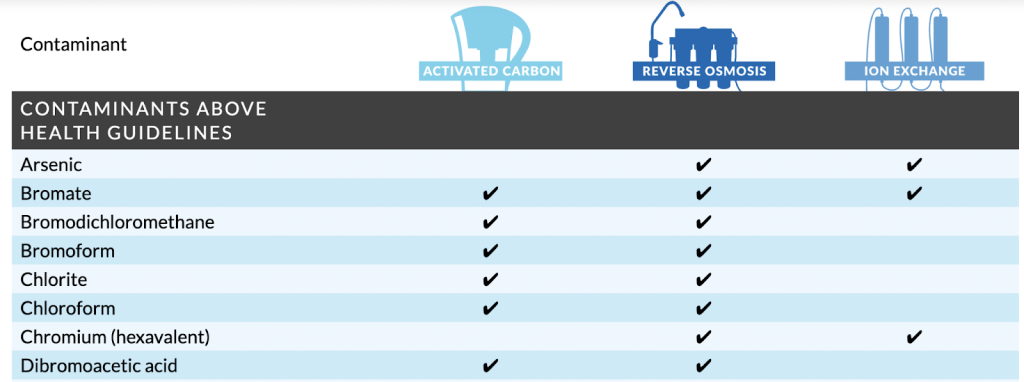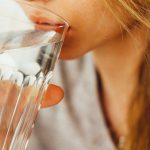Ask A Naturopath: What’s In Our Water and Why Is Drinking Water Quality Important?

Welcome to a new series called Ask A Naturopath, where we explore health and wellness topics with local Naturopath Doctor Laura Kostrzewski. This time, we’re looking at the importance of drinking water quality and asking the question, “What’s in our water?”
Some of the future topics on the list include: What’s In Our Sunscreen, Toxicity Concerns From Our Seafood, Why Does Indoor Air Purity Matter, and more!
Does Your City Have Good Drinking Water Quality?
Even if you don’t live in one of the cities with the freshest drinking water, you probably assume that your city’s drinking water quality is fine. Generally, most cities in the U.S. have drinking water that’s safe to drink, but knowing what’s in your water is still key.
San Diego tap water, for example, is rated as safe to drink. However, many people complain about the taste because San Diego imports up to 90% of its tap water from the Colorado River and Northern California. It has to travel a long distance to reach America’s Finest City.
Along the way, the water is chlorinated for safety and often picks up a variety of other minerals. You can expect to find everything from copper to bromate in San Diego drinking water.
To know whether San Diego drinking water quality hits the mark, we asked Naturopathic Doctor Laura Kostrzewski. Here’s what she had to say:
About The Doctor:

Dr. Laura Kostrzewski is a San Diego native who completed her doctorate of Naturopathic Medicine at Bastyr University located in Sorrento Valley. Currently, Dr. K sees patients in-person at Avena Natural Health in Solana Beach off South Cedros or via telemedicine. Her areas of focus include women’s health and neurodegenerative conditions. She is trained in Dr. Bredesen’s Reversing Cognitive Decline program, making her a Bredesen Protocol doctor in San Diego who is fully experienced and trained in hormone replacement therapy.
Question: Why is water quality important?
The importance of drinking good water cannot be understated. Our bodies are made up of about 60% water, so it is extremely important to have adequate hydration for many reasons. One of my favorite reasons is to support detoxification processes in the body. Some of the ways we detoxify are through urination, defecation, and sweating, all of which require water. Common issues that people experience with suboptimal hydration are headaches, poor skin quality, fatigue, and other health issues.
We are exposed to many chemicals (some of which will be discussed below), toxins, and bacteria through our water consumption, so I want to emphasize that it is not just drinking enough water that is important, but drinking clean and pure water that makes the difference. What I mean by that, is the water is filtered to remove contaminants such as microplastics, heavy metals, and other toxins. In the following paragraphs, we will dive into the quality of our San Diego water and talk about solutions for improving water quality.
Question: So what is in San Diego tap water?
The Environmental Working Group (EWG) is a wonderful resource that can be used to look at water quality in different cities. It should be noted that “legal limits for contaminants in tap water have not been updated in about 20 years.”2 A quick look at San Diego water identifies 30 different total contaminants in San Diego water, with 16 exceeding the health guidelines identified by the EWG. The Environmental Working Group does have stricter guidelines for “safe” levels of chemicals in water, and these are often below the legal limit that has been established. For example, the legal limit of Arsenic in our water is 10 parts per billion, and San Diego has 0.0901 parts per billion. The EWG’s health guideline is 0.004 parts per billion, due to a potential effect of cancer with arsenic exposure or toxicity. Another major toxin in San Diego water is Uranium, which also can contribute to cancer development with exposure. Again, the EWG has a stricter guideline than the legal limit, but we still see the San Diego water containing more Uranium than the EWG identifies for optimal health.
I highly recommend using the EWG water database to examine your tap water, and taking appropriate steps to ensure that your water is contributing to your health, not harming it.
Question: So, what water should I be drinking?
At home:
I always recommend having a water filtration system at home, preferably one that can reduce the amount of the toxins found in so much of our water. The EWG has a wonderful table showing various contaminants and identifying which filtration system can eliminate them from your water. It is clear that the top filtering mechanisms are activated carbon filtration and reverse osmosis, so I almost always recommend these options to my patients. I personally have a Berkey Water Filter in my home that we refill every few days and my whole family uses for drinking, cooking, and even making coffee. One environmental downside to reverse osmosis is the amount of waste water it creates. Under sink systems need to use about 3 times the amount of water that ends up in your tank to fill it. We previously used a GE RO system purchased at Home Depot and have noticed a reduction in our water bill now that the system is not running night and day to keep the it full.

On the go:
I recommend using either a stainless steel or glass water bottle for on-the-go water drinking. I always recommend against using plastic drinking water bottles, both refillable and disposable.
The main reason I advise against using plastics is the endocrine disrupting abilities of many chemicals found in plastics. In fact, there are 144 known chemicals or chemical groups that are found in plastics and pose hazards to human health.1 Most of the time, BPA (bisphenol A) is the “trendy” plastic to avoid, and you will see many labels saying “BPA free.” However, the alternative chemicals used probably also have negative health impacts, so I find it best to avoid all plastics in general. Per the Endocrine society, nearly all people have endocrine disrupting chemicals present in their bodies, and these can contribute to hormone issues, diabetes, cancer, neurological issues and other health concerns. They are especially dangerous when exposed to a pregnant woman, as they can cause DNA modifications that affect the baby and likely even future generations.1
Additionally, disposable water bottles are extremely wasteful and are harming our ocean animals. It is estimated that by 2050, the amount of plastics in our oceans will exceed the amount of fish, by weight.3 Furthermore, animals are dying due to consumption of plastics in the water, and having reproductive abnormalities due to the endocrine disrupting properties of the chemicals found in these plastics.3 Anything we can do to minimize this, I always advocate for.
To learn more about Doctor Kostrzewski you can visit her website, NDLaura.com, to learn more about her areas of focus or book a consultation.
References:
- Endocrine Society. “Plastics Pose Threat to Human Health.” Endocrine Society, Endocrine Society, 15 Dec. 2020, https://www.endocrine.org/news-and-advocacy/news-room/2020/plastics-pose-threat-to-human-health.
- Environmental Working Group. “EWG’s Tap Water Database: What’s in Your Drinking Water?” EWG Tap Water Database, Environmental Working Group , 2023, https://www.ewg.org/tapwater/system.php?pws=CA3710020.
- Ranniger, Gwen. “Ocean Plastic Pollution.” EHN, Environmental Health News, 7 Nov. 2022, https://www.ehn.org/ocean-plastic-pollution-2654378379.html.





